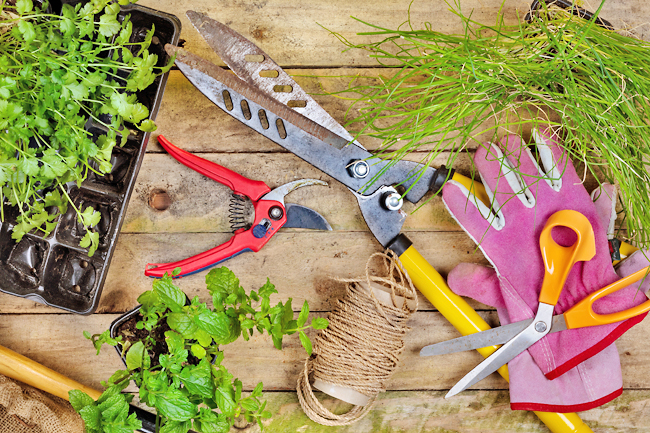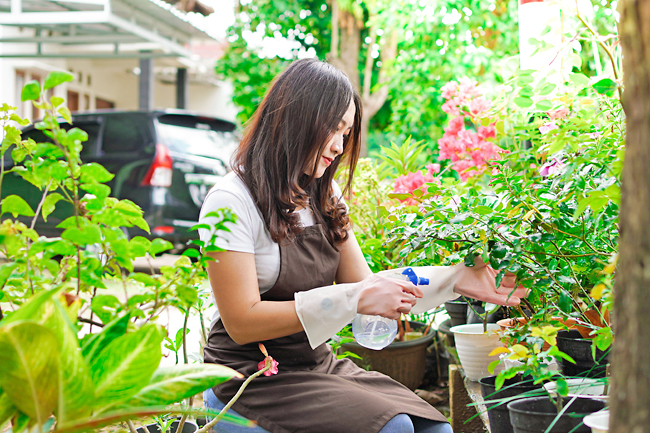Laura Daily
THE WASHINGTON POST – Gardening doesn’t have a set of hard and fast rules to follow; it’s more a matter of trial, error and patience. Using quality seeds and having the right soil and lighting for your mix of plants helps, though, as does having the right tools and supplies for the job.
You don’t need fancy, expensive branded equipment, but investing in sturdy gear will ensure that it lasts for years to come. Here are 13 items that experts said should be in any gardener’s tool kit.
HAND PRUNING SHEARS
These are at the top of the list, said avid home gardener and Assistant Professor of Landscape Architecture at University of California at Davis Haven Kiers. You can use them to deadhead flowers, cut back grasses, trim broken twigs or harvest that perfect pepper. Look for sturdy shears with sharp blades. Try various models to find a pair that is comfortable for your hands. High-end brands may be expensive but they beat cheap ones that will dull or fall apart quickly. To maintain them, sharpen once a year.
GARDEN SHOVEL
This is a must whether you’re digging holes for new plants, dividing plants when they get too big or removing dead plants. A garden shovel has the same long handle as a traditional shovel, but it is lightweight, with a smaller spade. There are several types, and each is suited to a different task. A straight edge can help create defined borders, while a spearhead spade with a pointy tip can remove existing shrubs. Digital Garden Editor for Better Homes & Gardens Viveka Neveln said a round digging shovel is a great workhorse for those just starting to build their toolbox.


HORI-HORI
The Swiss Army knife of garden tools, a hori-hori (or soil knife) does it all, said Eloise Czajkowski, a gardener in Denver. It has a straight edge and one that’s serrated, with a sharp notch to cut twine or open compost bags. Its point, which is notched with measurements, can replace a trowel for digging holes, allowing you to measure hole depth as you work. As with pruning shears, it’s worth investing in a nice one.
GARDEN SICKLE
Ornamental grasses should be cut back when dormant, giving new grass space to grow. A garden sickle makes quick work of this task, with no power tools required. Simply grab the grass with one hand and hold the sickle in the other to slice through. Kiers said an inexpensive one is fine, because you can just replace it when it dulls.
HAND RAKE
Instead of using a huge leaf rake or a blower that could destroy delicate plants, try a small hand rake. You actually need two hand rakes, Neveln said: a leaf rake with flexible tines for cleaning out leaves and debris caught in plants, and a garden rake with stiff tines to spread compost or soil.
CART OR WAGON
Whether you’re hauling mulch, big bags of soil or planters, you’ll need something to help you move heavy things. You can opt for the traditional three-wheel wheelbarrow, but there are all sizes and models of carts designed for garden work, Neveln said. (This includes ones with two to four wheels and even some with all-terrain tires). If possible, test-drive any cart you are considering. Load in a few items, and pull or push it around the store to see whether you like how it steers.
KNEELER
Being on your knees for hours can tax even the best joints or spine. A two-in-one garden kneeler is a thick, kneeling pad with supports on either side to help you get down and back up. It also flips over to become a cushioned seat. Look for a rust-resistant frame that locks into place to provide support as you stand up. Extra-thick foam that provides added cushioning is a plus. You should also check how much weight the seat can hold. A good one should support up to 250 pounds.
HOSE
The easier it is to move water from one place to another, the better your chances of keeping plants alive. BHG has an online guide to garden hoses based on testing. Kiers also suggests attaching a watering wand (it looks like a large shower head) to your hose to reduce the water pressure, so you can gently drench plants. Have a watering can handy for hard-to-reach spots.
FOLDING HAND SAW
For shrub or tree branches that are too thick for pruning shears, an inexpensive hand saw will do the job. Look for models with blades that fold into the handle for safety.
GARDEN TUB TRUG
These flexible tubs with handles are a go-to for hauling and storing. Toss in hand tools and supplies to take to the garden, or put trimmings and clippings into the tub to take to your compost bin or yard-waste bags. Most tubs are made of washable polyethylene. In lieu of a tub, Kiers suggested an IKEA Frakta shopping bag (or something similar). She uses the 19-gallon plastic bag to tote tools, compost, garden weeds and more. And the cost is hard to beat: 99 cents.
ZIP TIES
A spool of plastic or Velcro zip ties can be used to secure growing plants to stakes, cages or trellises for support.
STURDY PANTS
Kiers likes to wear thick cargo pants with reinforced knees and deep pockets while gardening. Czajkowski swears by her Duluth Trading gardening bib overalls (starting around USD90) with ripstop fabric and plenty of pockets. The common denominator: pockets, for stashing a hori-hori, ties, gloves, markers or sunscreen.
GLOVES
Of course you want to protect your hands, but the type of gloves and how often you wear them are a matter of personal preference. “If you are like me, you have more than one type,” Neveln said. “Some are waterproof for working in wet soil. Some are more breathable work gloves for pruning and weeding, so my hands don’t get too hot.” Gloves can be as inexpensive. Czajkowski uses nitrile gloves, which fit snugly without much bulk. A six-pack lasts her the entire gardening season. Kiers said she doesn’t wear gloves unless she’s working with something “pokey” (think thorns or a spiky cactus) or is in muddy conditions.





